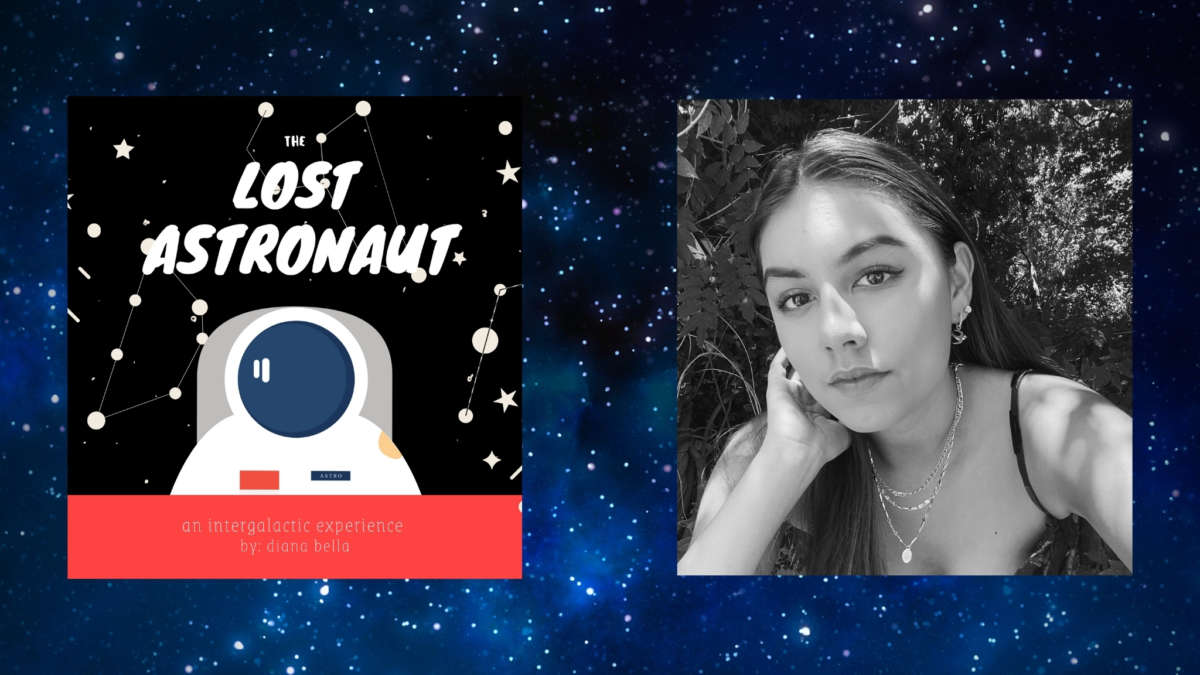The Lost Astronaut by Diana Escobar takes you on an otherworldly, but universal, journey that will delight and inspire children while also bringing a smile to any adult’s face. It is, supremely and seriously and utterly sincerely, cute. Astro the astronaut faces a difficult dilemma; floating around in the scary, beautiful, wide expanse of outer space and very much needing to stick the landing. Where does our fearless protagonist turn for help?
To your young readers, naturally! While interacting with the book they get the satisfaction of guiding, through trial and error, poor Astro to safety and solid ground. Chock-full of pop-ups and an array of sensational (and sensory) discoveries, The Lost Astronaut will provide any child with their own little planet of fun. It’s almost a whole activity kit wrapped up in one clever book! We asked the young-at-heart author, literally young since she’s still in high school, some questions that she answered with aplomb. Read our review of her book here.
Q: In the book’s description, you write “Other inspirational books invoked and inspired dusty ideas to be later presented as the experience of The Lost Astronaut.” What books and ideas inspired you?
A: Two books inspired both the course of The Lost Astronaut and me: Harold and the Purple Crayon by Crockett Johnson and Press Here by Herve Tullet. The former is a wholesome book where readers follow Harold into a world of possibilities and his purple crayon. The latter is a story in which the readers interact with the physical book itself which, as one can conclude, inspired me to include the interaction with the physical book of The Lost Astronaut. Aside from their differences, both books have a similar quality: a cute, yet simplistic and minimal illustration. This particular quality drew my attention because simple animation pushes readers to be more engaged in the storyline itself. Both are excellent and unique books and their great qualities inspired ideas to be later revealed as The Lost Astronaut.
Q: How did the book’s concept develop over time?
A: Surprisingly, the book’s concept has been quite consistent through rounds of edits. In the beginning, it was a simpler story about an astronaut, Astro, who is lost in space and needs the reader’s help to guide him home through manipulation of the book itself. Further into the rounds of edits, I wanted to add a unique element that could potentially give the readers an extra boost of confidence through showing their “work” of interacting with the book and seeing it pay off. Thus, the addition of the “happiness meter” was born. The end goal was to give an optimal interactive book that children can endorse and complete with full satisfaction.
Q: What kind of reception has the book gotten? Have you shared it with any children, for example?
A: Though The Lost Astronaut is a recent publication, the children that have read and interacted with the book love the experience. At this stage, children have been shown to gravitate to the activity of hugging, moving and tapping the book in order to save Astro. Parents have noted that they love seeing their children submerge themselves into the story and their playful attitude towards the book. Overall, the reception that the book has received at this point in time has been positive, and children are interacting with the book in a way that curates a love for learning and reading.
Q: As a teen author, what advice would you give to other young people who would like to write and publish a book, and what’s the hardest obstacle to overcome?
A: Why wait? The best advice I would give to other young aspiring authors is to act on what they can do now to propel themselves to their end goal. Start the project now because it might be a bestseller. There are myriads of resources and communities that are thriving and are built for young authors.
However, starting any project comes with its obstacles. In my experience, the hardest obstacle to overcome would be finding and broadcasting to the book’s audience. Another obstacle prior to pinpointing the audience would be deciding whether to self-publish or use traditional publishing by a publishing house. There are various factors that go into this decision, but it is undoubtedly a vital decision that will help pave the path to publication. These will not happen, though, unless one decides that the waiting game is over.
Q: What are your plans for future writing and illustration projects?
A: I plan to continue creating, writing and illustrating by publishing more books and a sequel to The Lost Astronaut. Hopefully, I’ll come out with other books with messages I believe should receive more focus in the children’s book community; identity, culture and acceptance. Similar to my intention in portraying Astro as an androgynous astronaut, I hope to spotlight these messages to hopefully inspire more young readers.
You can purchase The Lost Astronaut here.
https://booktrib.com/wp-content/uploads/2021/08/FullSizeRender-300×300.jpg
About Diana Escobar:



